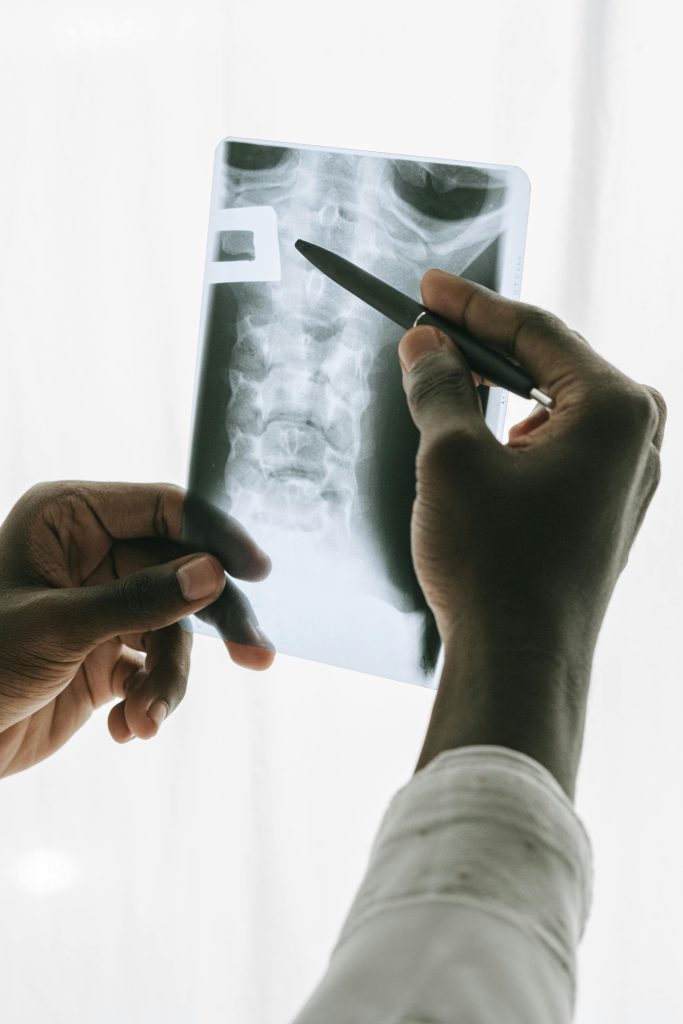
The most common forms of endometriosis are peritoneal and pelvic. However, endometriosis can also affect other areas of the body, such as the abdomen and related organs, the chest, or even the brain. Cases are relatively rare, and while medical solutions for frequently encountered forms are still quite few, dealing with endometriosis located in other parts of the body is more complicated.
Thoracic endometriosis involves various clinical or radiological forms associated with the growth of endometrial tissue (glands and stroma – the support network of an organ, consisting of connective tissue, vessels, and nerves) located in the lungs, parenchyma, airways, or pleura. It usually presents in the form of catamenial pneumothorax, catamenial hemothorax, hemoptysis, and pulmonary nodules.
Catamenial pneumothorax, or the phenomenon of lung collapse near menstruation, is one of the most common forms of thoracic endometriosis, found in over 80% of cases. Occasionally, it may present in the form of hemoptysis (expectorant cough with bleeding) associated with menstruation. In almost all cases, thoracic endometriosis is unilateral and right-sided, although cases have been reported in which the disease has been located on the left side.
Among the most common symptoms are cough, chest pain, or shortness of breath. Chest pain may resemble spontaneous pneumothorax or may be associated with shoulder pain, scapular girdle (clavicle and scapula), or even neck pain.
Management of thoracic endometriosis involves analyzing the gynecological history and evaluating the menstrual cycle for patients with spontaneous and recurrent pneumothorax. If thoracic endometriosis is suspected, the doctor may recommend an X-ray followed by video-assisted thoracoscopy, a minimally invasive procedure.
During surgery, accessible lesions and fenestrations must be resected, as their ablation is not recommended due to a higher recurrence rate. Pleural adhesions, if observed, are removed by pleurolysis. The diagnosis of thoracic endometriosis can be established after performing a native CT examination of the chest with an intravenous contrast agent.
Drug treatments, including oral contraceptives, progestogens, and GnRH agonists, have been used to curb the development of endometriotic outbreaks, but surgical treatment has shown the lowest recurrence rate for thoracic endometriosis.
A multidisciplinary team is required during surgery, including a general surgeon, a pulmonologist, a gynecologist surgeon, and a neurosurgeon if nerve filaments are affected. The hospitalization period for such an intervention ranges from 1 to 5 days.
If you already have peritoneal, pelvic endometriosis, and/or adenomyosis and experience the above symptoms, consult a specialist who will recommend all the necessary investigations to establish a potential diagnosis of thoracic endometriosis and then choose the appropriate treatment plan with your gynecologist.
